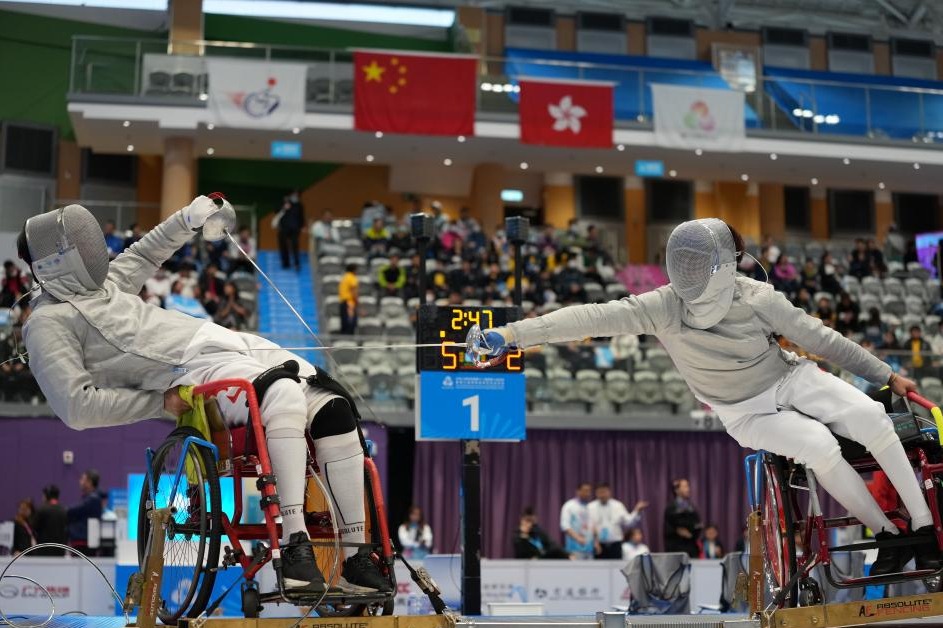Wing defects won't delay 737 return, Boeing says
By SCOTT REEVES in New York | China Daily Global | Updated: 2019-06-04 23:17

A possibly defective part in the wings of Boeing 737 MAX jets can be quickly fixed and is unlikely to delay return of the airliner to commercial service, officials said Monday.
Boeing told the US Federal Aviation Administration (FAA) that leading-edge slat tracks on certain 737 MAX and NG jets may have been improperly manufactured by a subcontractor and therefore may not meet regulatory requirements for strength and durability.
"Although a complete failure of a leading-edge slat track would not result in a loss of the aircraft, a risk remains that a failed part could lead to aircraft damage in flight," the FAA said in a statement released on Sunday. "The FAA will mandate Boeing's service actions to identify and remove the discrepant parts from service within 10 days."
There have been no reported failures of the wing slat tracks, but the part will be replaced as a precaution, Boeing and the FAA said.
The tracks move a portion of the leading edge of the wings into position to increase lift at low speed during take-off and landing. This lowers the plane's stalling speed. The flap-like device moved into position by the tracks isn't used when climbing or cruising at high speed because it would increase drag and slow the plane.
"The required work could be done in place to presently idled MAX aircraft," Robert Mann, president of R.W. Mann & Co, an aircraft consultancy, told China Daily. "It will be part of the testing required to return the planes to service. The 737 NG aircraft could have the work done overnight."
The key issue, Mann said, is Boeing's quality assurance for parts manufactured by subcontractors.
"These parts shouldn't have been installed if they didn't meet specifications," Mann said. "It's the sort of quality assurance that should be on-going. On top of everything else that's happened to MAX aircraft, this is not a good picture."
The problem affects 148 slat tracks manufactured by a single supplier, Boeing told the FAA. Boeing said it believed 20 new MAX and 21 older NG planes, the predecessor to the MA, may have defective slat tracks. However, the FAA advised airlines to inspect an additional 179 MAXs and 133 NGs to be sure the parts meet safety requirements. The second group includes 33 MAX and 32 NG planes flown by US airlines. Neither the FAA nor Boeing said where the other planes were located.
"We are committed to supporting our customers in every way possible as they identify and replace these potentially non-conforming tracks," Kevin McAllister, CEO of Boeing Commercial Airplanes, said in a statement.
Boeing immediately notified the FAA of the potential problem with the wing tracks, a step it apparently did not take when problems arose with the 737 MAX's anti-stall device.
Boeing MAX jets were grounded worldwide following crashes on March 10 in Ethiopia and Oct 29, 2018, in Indonesia that killed a total of 346 passengers and crew. Preliminary investigations suggest the aircraft's Maneuvering Characteristics Augmentation System (MCAS), an automated anti-stall device, apparently forced the noses of Lion Air and Ethiopian Airlines flights down and into a fatal plunge when it erroneously determined the airplanes were about to stall. To avoid a stall, MCAS points the nose of the plane down to gain air speed.
In April, the FAA said computer-based training would be sufficient and flight simulators would not be required as part of recertifying the aircraft.
However, the FAA may require additional training for pilots flying MAX jets. If so, additional training would increase cost and could delay return of the airliner to commercial service.
If the FAA approves Boeing's software update for MCAS, analysts said 737 MAX jets could return to service by late summer.
"Boeing is now providing additional information to address FAA requests that include details on how pilots interact with the airplane controls and displays in different scenarios," Boeing said in a statement.
























